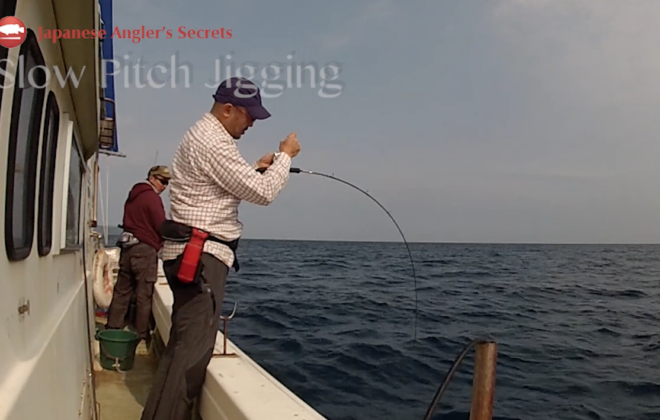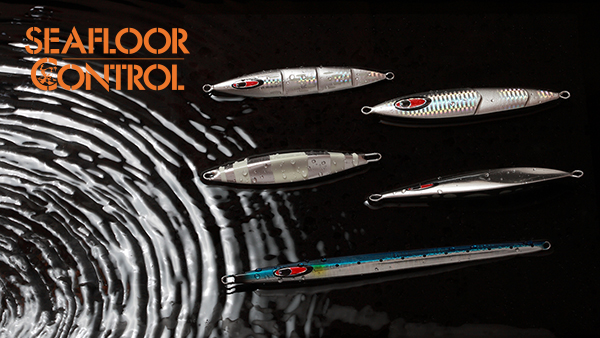Fishing Line Confusion
I’m getting a lot of inquiries about line strength recently. It’s confusing to me too. I’m sharing some information I know.
Difference in Line Rating
US uses tensile strength by poundage to rate the line.
Europe labels diameter and poundage.
Japan uses the class number which is determined by denir. It is the weight (gram) of the threads to make 9000m of line.
Japan’s class number is as follows.
| Class Number | Denir (d) | Diameter (mm) |
| 1.0 | 200 | 0.165 |
| 1.2 | 240 | 0.185 |
| 1.5 | 300 | 0.205 |
| 2.0 | 400 | 0.235 |
| 2.5 | 500 | 0.260 |
| 3.0 | 600 | 0.285 |
| 3.5 | 700 | 0.310 |
| 4.0 | 800 | 0.330 |
The diameter is only a typical value. The class number is determined by the weight of the line. The diameter and the strength depend on how the line is braided.
Line Strength Indication
Anyway, Japan line does have line strength by poundage (or kilograms) too, even though some indicate that and some don’t. But this poundage is different from US poundage. This is what confuses us.
There are 2 different gauges.
Pound Test – USA
It is indicated like these:
- PTL
- TEST (lb)
- lbT
This poundage asserts that the line does not break at the traction.
Pound Class – JAPAN
It is indicated like these:
- PCL
- CLASS (lb)
- lbC
This poundage asserts that the line does break at the traction.
They look similar, but the poundage can be very different.
Suppose there’s a line which is rated 10 “lbC”. It is guaranteed that it will break at 10 lb. It also means that it can break at 7 lb or 8 lb. But it will never break at 6 lb. So it can be rated 6 “lbT”
So, here is the line rated 10 lbC and 6 lbT.
Japan uses Pound-Class.
US uses Pound-Test.
I don’t know what Europe uses. It seems like Pound-Class.
Also, some Japanese makers use maximum strength and some average. Some indicate MAX or AVE, some don’t. It is assumed that they probably assert maximum strength because it will sell more.
Furthermore, some makers assert “knot strength”. It makes sense because the knot is the weakest part. Even though makers indicate it as knot strength, retailers sometimes mistakenly indicate it as line strength.
It’s really confusing when you want to compare different lines. It’s really up to anglers to determine what’s worth trusting.
Fireline for Comparison
Fireline is US product and it’s selling around the world. Of course in Japan too. But not just as imported line, there’s Berkley Japan who rates the line according to Japan regulations. This one really confuses us because of this poundage difference.
I called Berkley Japan and asked to match which Japan label is which US label.
Fireline has been remodeled recently and Berkley Japan renamed it Super Fireline. It is the same product as what’s called Fireline Original in US.
Here’s a table to compare Japan label and US label, in line with Japan class number.
Japan Regulations
| class number | Dia meter (mm) |
|---|---|
| 1.0 | 0.165 |
| 1.2 | 0.185 |
| 1.5 | 0.205 |
| 2.0 | 0.235 |
| 2.5 | 0.260 |
| 3.0 | 0.285 |
| 3.5 | 0.310 |
| 4.0 | 0.330 |
Super Fireline (JAPAN)
| Poundage PCL | Dia meter (mm) |
|---|---|
| 16 lbC | ? |
| 20 lbC | ? |
| 24 lbC | ? |
| 30 lbC | ? |
| 40 lbC | ? |
| 45 lbC | ? |
| N/A | N/A |
| 50 lbC | ? |
Fireline Original (US)
| Poundage PTL | Dia meter (mm) |
|---|---|
| 4 lbT | 0.12 |
| 6 lbT | 0.15 |
| 8 lbT | 0.17 |
| 10 lbT | 0.20 |
| 14 lbT | 0.22 |
| N/A | N/A |
| N/A | N/A |
| 20 lbT | 0.30 |
Now, Fireline Japan does not show diameter. Because Japan regulation uses denier (the line weight) to rate braided lines. Berkley Japan rates the lines in class number according to this regulation.
US Berkley measures the line by laser. It should be accurate. You can see the line is much thinner for the class it is rated in.
The actual diameter of PE lines in Japan can be very different in the same class. Because it is the weight of the line that it’s rated by. The diameter can be different depending on how it’s braided. Tight or loose. 8-ply or 4-ply.
By the way, I have ordered Fireline from Chinese site before. Just for the hell of it. It was ridiculously cheap. They did deliver OK. But I found that it was braided ridiculously fat and clumsy. I just laughed and threw it away.
Fireline is a coated line. I couldn’t figure out what the weight of the coating effects its rating… But anyway, it’s safe to say Fireline is thin for the class.
You don’t see PE3.0 in US products. This is produced specifically for Japanese market.
Also, Super Fireline “Colored” is produced by Berkley Japan only, responding to the need of Japanese slow pitch anglers by marking the line with different colors every 10 meters.
Anyway, it’s amazing how different the poundage can be. Japanese poundage is 3 to 4 times bigger than US. Actually, the difference is usually a lot less with high-end lines. They have the technology and precise production to make constant uniform lines.
Let’s face it. Fireline is not exactly a high-end line. Fireline is really not braided, so once the coating is damaged it’s very very weak. I use it too for its unique properties to suit slow pitch jigging and for the price, but I renew it every season.
Tags In
Related Posts
5 Comments
Leave a Reply Cancel reply
Categories
- 1. SPJ (57)
- 1-1. Principles (9)
- 1-2. Techniques (11)
- 1-3. Setup (17)
- 1-4. FAQ (19)
- 1-5. Tackles (3)
- 1-6. Video Gallery (2)
- 2. Other Offshore Games (5)
- 3. Fishing Report (105)
- 3-1. Totos (25)
- 3-2. Readers (72)
- 4. Fish Cooking (19)
- 4-1. Iki-Jime (3)
- 4-2. The Art of Sashimi (5)
- 4-3. Recipe (7)
- 4-4. Seasoning (3)
- 5. Fishing Charter (6)
- Fish (12)






おはようございます
Ohayōgozaimasu
Toto-san,
have you seen brand Momoi before ?
it said japanese brand. http://momoifishing.jp/en/products/pe
3 years ago, i “accidentally” buy pe2 (0.23mm, 45lb test).
the first year, it just sat on my drawer, never used.
the second year, i loaded it to 10kg drag overhead reel and surprised that it can survived when fight with 11kg dogtooth and 20kg giant treavally with tight drag setting.
ever since that trip, i rest my pe4,5,6,7,8 in my drawer… haha..
another thing that amazed me with this Momoi pe is its color never fade out (10m each color).
after 2 years of intense use (2-3 trip a month) the colors still bright and vivid.
unfortunately, today price is almost twice compared to when buy 3 years ago (JPY 2,564).
Hi Aganisidub.
Thank you very much for your post.
I’ve heard of this line. Momoi Fishing Ryujin. It’s made in Japan for sure, but the products are rare to be found in Japan. There are very few information about it, but this limited information tells about its outstanding strength and usability.
Hi Totos,
I recently bought a SOM L30Hi and I have paired it with 603-3 and in my opnion; they are perfect. Even though the L30Hi is a small reel but it can pack a tremendous amount of PE line. I normally fish in shallow places like 70 meters or less, and I dont want to waste the PE line by spool them all up so can I back it up with some cheap pe/braid line and top it off with 200m of a good PE2? Please advise. Thank you.
Hi Totos, you just answered my question on FB page. Please ignore this question and my apologies for double posts. For those who still curious on the answer, please see Totos’ answer below that I copied over from FB.
——
Totos:
“Yes. Base up with some line first. Can be mono line too. But I would get 300m PE. When it’s time to change the line, you can unload the line, reverse it, and get the other half on top. It’s cheaper in a long run. Good luck in the field!”
Hi Ethan.
I would back up with mono line or something. And I would get 300m or 400m of good PE. When you are done on one end, you can reverse the line load and use the other end. 400m is cheaper than 2 x 200m. With a 200m load, if you get one line break, you may become too short next.